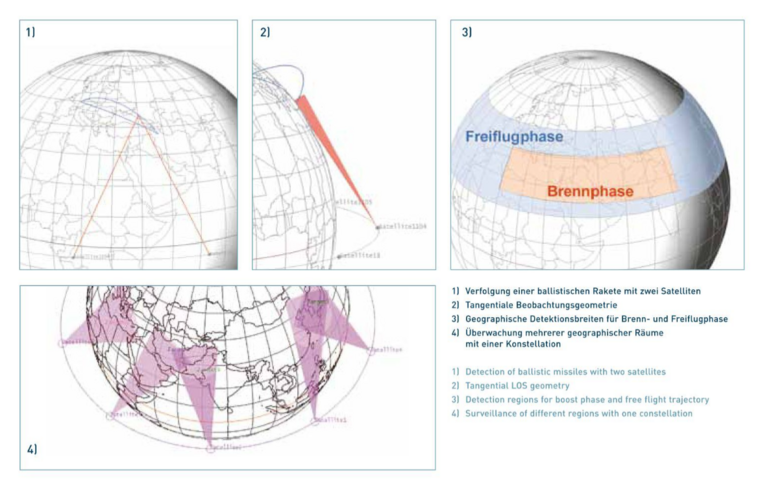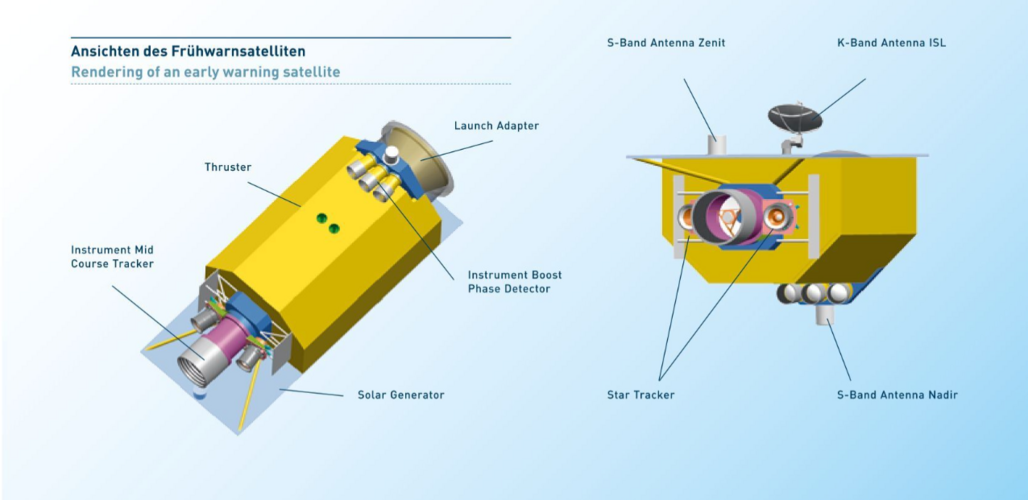I've figured that there is no thread regarding this topic on the forum, which is a bit surprising.
As far as I know, the first serious European attempts on acquiring space-based BMD early warning capabilities could be traced back to late 2000s, when France launched SPIRALE (Systeme Preparatoire Infra-Rouge pour l'Alerte/ Preparatory System for IR Early Warning) in 2009. Details about SPIRALE could be found on eoPORTAL ran by ESA. A bit after the launch of SPIRALE, Germany's OHB was proposing a early warning satellite constellation of up to 8 satellites called ATHENE, following NATO Lisbon Summit and their declaration to commitment to European missile defence capability.
One should note that around this point of time, NATO was claiming that their European missile defence program, spearheaded by EPAA that formalized in 2009, was not aiming Russian missiles and instead was there to counter 3rd world missile threats, mainly that of Iran. Anyways, for such reason, one could notice that proposed ATHENE satellites were supposed to observe boost phase of ballistic missiles from the Arab-Levant and Persian region, with low orbital inclination. similarly, SPIRALE was launched on a HEO orbit of 2° inclination. Also for this reason, OHB was mentioning that the ATHENE would possibly be launched (from Korou) by not only Vega but also Soyuz as well.
Though after the demonstration of SPIRALE and ATHENE proposals, it seems like there weren't much related developments that followed up. Although a civil war broke out in Ukraine involving Russia started in 2014 and tensions between Russia and NATO very much increased, I don't think that Europe was that keen of acquiring its own, serious BMD capability during this period, especially considering the fact that the signing of JCPOA significantly reduced a need for European BMD capability under what was claimed to be their defence capability goals.
As far as I know, the first serious European attempts on acquiring space-based BMD early warning capabilities could be traced back to late 2000s, when France launched SPIRALE (Systeme Preparatoire Infra-Rouge pour l'Alerte/ Preparatory System for IR Early Warning) in 2009. Details about SPIRALE could be found on eoPORTAL ran by ESA. A bit after the launch of SPIRALE, Germany's OHB was proposing a early warning satellite constellation of up to 8 satellites called ATHENE, following NATO Lisbon Summit and their declaration to commitment to European missile defence capability.
One should note that around this point of time, NATO was claiming that their European missile defence program, spearheaded by EPAA that formalized in 2009, was not aiming Russian missiles and instead was there to counter 3rd world missile threats, mainly that of Iran. Anyways, for such reason, one could notice that proposed ATHENE satellites were supposed to observe boost phase of ballistic missiles from the Arab-Levant and Persian region, with low orbital inclination. similarly, SPIRALE was launched on a HEO orbit of 2° inclination. Also for this reason, OHB was mentioning that the ATHENE would possibly be launched (from Korou) by not only Vega but also Soyuz as well.
Though after the demonstration of SPIRALE and ATHENE proposals, it seems like there weren't much related developments that followed up. Although a civil war broke out in Ukraine involving Russia started in 2014 and tensions between Russia and NATO very much increased, I don't think that Europe was that keen of acquiring its own, serious BMD capability during this period, especially considering the fact that the signing of JCPOA significantly reduced a need for European BMD capability under what was claimed to be their defence capability goals.



